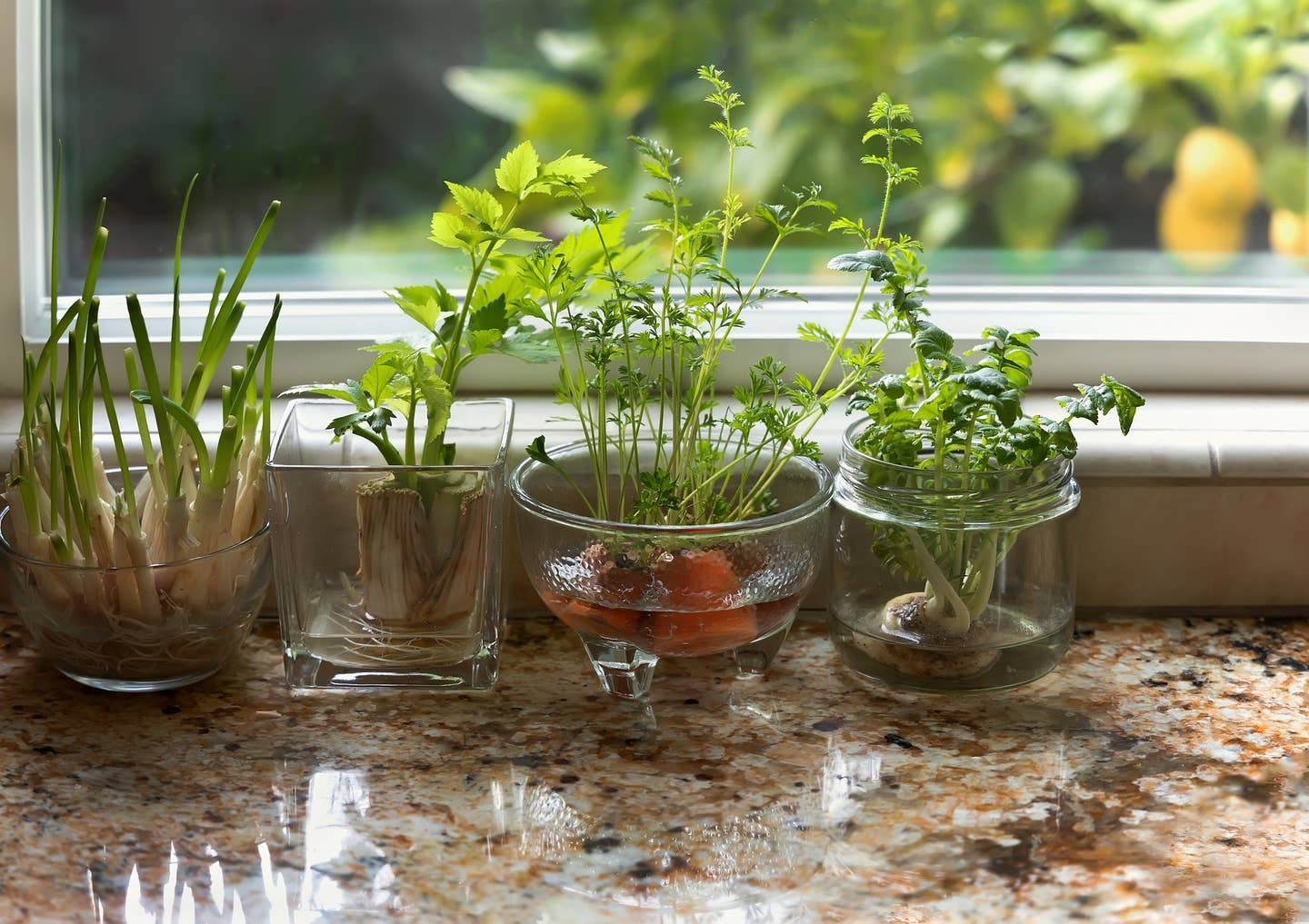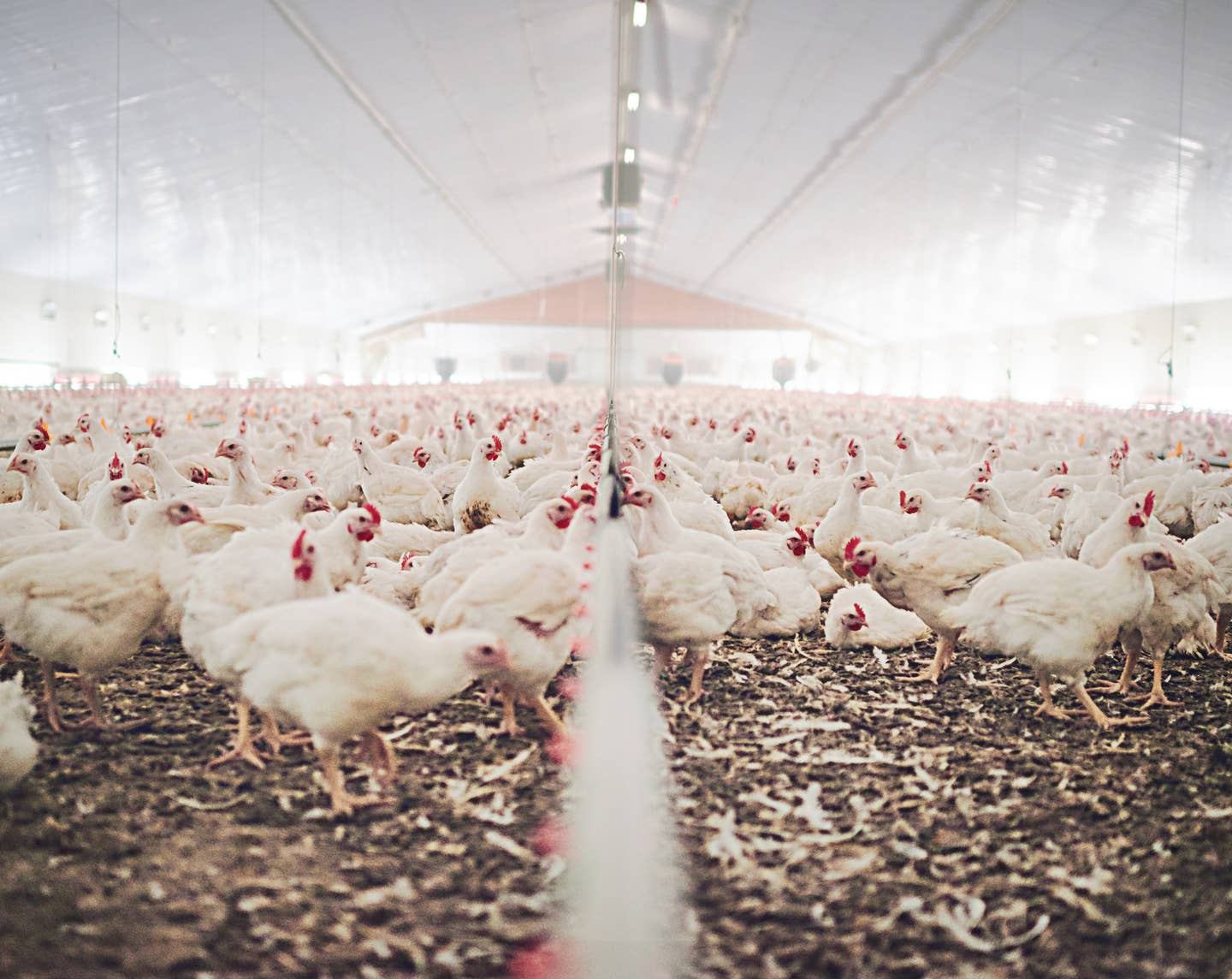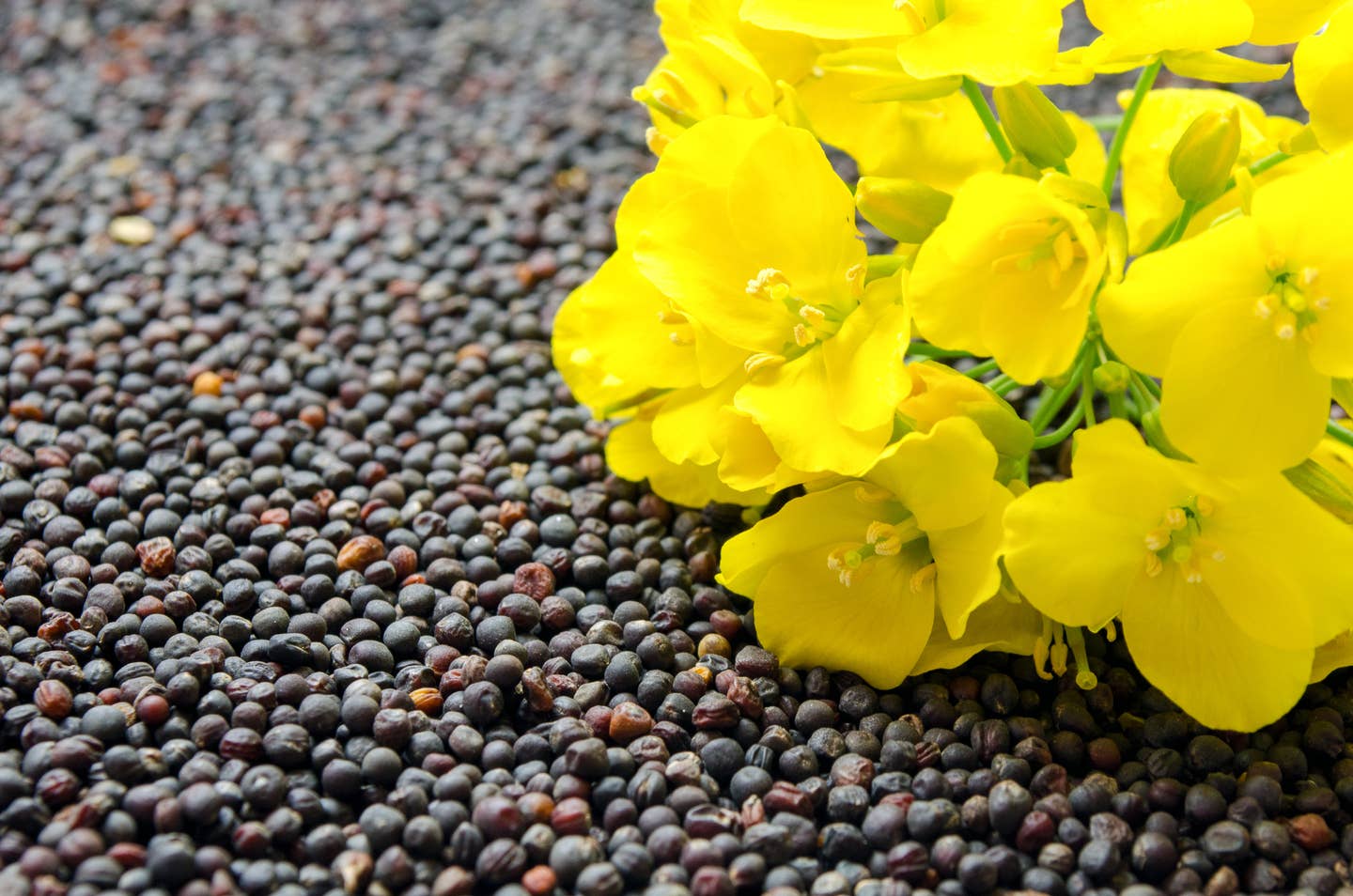
Reduce Your Food Waste: Grow New Fruit & Vegetables From Kitchen Scraps
What if your vegetables could re-grow indefinitely? No, it’s not a manufactured sci-fi vegetable from the future. It’s a pretty routine gardening hack that saves money, reduces food waste, and keeps a fresh supply of healthy veggies in your kitchen every day of the week. And it’s easy.
Here’s the good news: You don’t have to be a gardening expert to regrow vegetables. (You don’t have to be an expert to grow from seed, either.) Depending on what you regrow, you can do this in your kitchen, or, eventually, relocate the vegetables to your garden.
How to Grow Lettuce Greens, Celery, Carrots & Scallions from Scraps
1. Leafy Vegetables
Leafy greens are the healthiest foods you can put on your plate. Full of vitamins, minerals, and fiber, if you’re going to prioritize a singular food group, go with greens. It’s easy to opt for the pre-bagged greens but it’s even easier to grow your own. Whether romaine lettuce, celery, napa, or even bok choy cabbage, you can use that inedible base to sprout up healthy new greens.
How to regrow new vegetables: Simply place the cut-off base where the leaves or ribs all connect and put the cut side up in a small dish or tray with about a ½ inch of water (or about half as much water as the height of the core). Regularly change the water and within a few days, you should have fresh new greens. Move these to the garden too once they have roots.
2. Root Greens & Carrots
Turnip and beet greens are incredibly healthy and versatile. And like other leafy greens can re-grow too, even though they’re technically root veggies. When cutting fresh turnips or beets, leave about a half-inch of the vegetable top in half—not the stringy root but the top where the greens grow. Place cut-side down in half as much water and change regularly. Fresh greens will appear soon.
This works for carrots as well. Plant the stub part (not the pointy end) where the greens grow into the ground (essentially upside down) and it will begin to grow new roots.
3. Bulb Vegetables
Green onions, leeks, and fennel can regrow easily, too. Cut down to the inedible white roots, and like with the leafy green cores, place them cut-side up in water halfway to the top. Then, refresh the water regularly. You can regrow from onion and garlic bulbs, too.
But plant them directly in soil, not water. Cover the root base and keep the top exposed. Remember: the root is the scraggly hard part, not the pointy tips! Have a garlic bulb that already sprouted? If you see that green shoot pushing out through your bulb, place the garlic in a small amount of water and it will start to regrow. Then you can transfer to soil.
4. Herbs
Store-bought cilantro, basil, and parsley can re-root in a few days. Remove leaves toward the bottom of the stems and place in (warm) water like you would a bouquet of flowers. After the roots start to grow in a few weeks, you can plant in soil. Herbs like lots of sun and water but can grow quite a lot in the right environment!
5. Pineapple
Okay so don’t expect a ripe, juicy pineapple to regrow in two weeks, but there’s merit in this one. After the oh-so-satisfying twisting off of the pineapple top, pop it into some water or soil. It should root in a matter of weeks. You won’t see fruit anytime soon, but you will have a lovely houseplant. And if conditions are good, in a few years, you could actually have a pineapple, too!
6. Avocado
Take the seed, dry it out and peel the dark skin away so that the light "nut" is exposed. With 3 toothpicks position it flat side down in a glass of water so that half of the seed is submerged. Within a few days you will see a root and then also a green shoot, which ultimately will become your avocado tree. Once the sprout has two healthy leaves, it's time to transplant from water to a large pot (without harming the extensive roots). It may be a long-term project but the accomplishment of growing an actual tree from a simple fruit is beyond satisfying.
Bottom Line: To eat healthy and save money, grow your own vegetables
Scraps are actually the beginnings of a whole new plant, if you know how to grow it. Just follow simple steps to regrow your lettuce, carrots, onions and more. It's easy and you can do it in your windowsill.
More From The Beet






